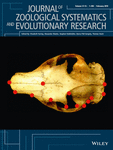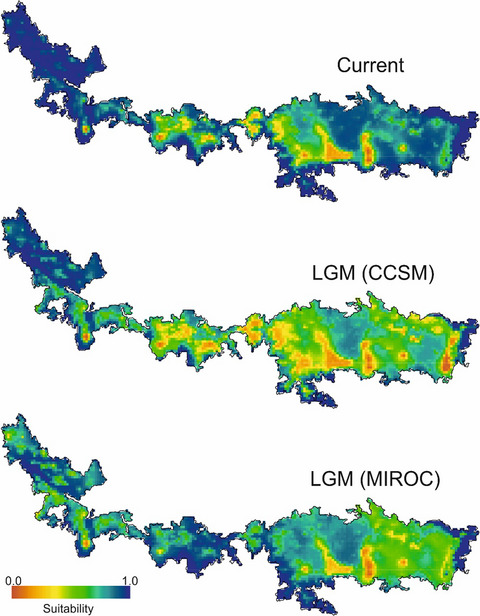Journal list menu
Export Citations
Download PDFs
Milnesium tardigradum Doyère, 1840: The first integrative study of interpopulation variability in a tardigrade species
- Pages: 1-23
- First Published: 16 July 2018
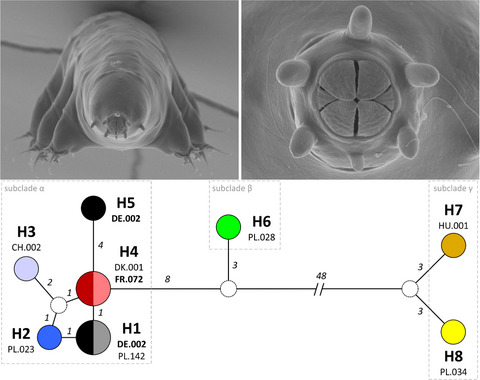
Intraspecific, interpopulation variability of a tardigrade Milnesium tardigradum was investigated by means of integrative taxonomy, including morphology (light and scanning electron microscopy), morphometry, and barcoding of a nuclear (ITS-2) and a mitochondrial marker (COI). The nine analysed European populations revealed low to moderate variability in morphology and in ITS-2 (≤4.0%). In contrast, COI exhibited low to surprisingly high divergence (≤11.4%), questioning the possibility of setting a universal barcoding threshold for tardigrade species delineation. Additionally, novel, taxonomically important traits for M. tardigradum are described.
Life cycle, morphology of developmental stages of Metorchis ussuriensis sp. nov. (Trematoda: Opisthorchiidae), and phylogenetic relationships with other opisthorchiids
- Pages: 24-40
- First Published: 08 May 2018
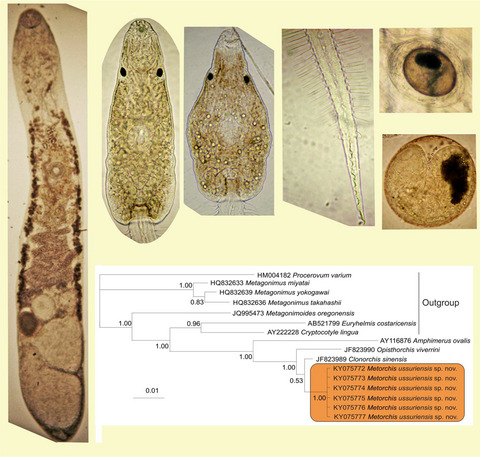
A new species, Metorchis ussuriensis sp. nov., was described in Russia. The first and second intermediate hosts, as well as the definitive host, were determined in the experiment. Morphometric parameters of M. ussuriensis sp. nov. demonstrate similarities with M. taiwanensis, but the two species differ in some characters. Three molecular markers (ITS2 region, 28S rRNA gene, and cox1 gene) were used for phylogenetic reconstructions. Comparison to other trematodes suggests that the 28S rRNA gene could proof suitable for the differentiation of trematode species.
Molecular phylogeny of neodalyellid flatworms (Rhabdocoela), including three new species from British Columbia
- Pages: 41-56
- First Published: 10 August 2018
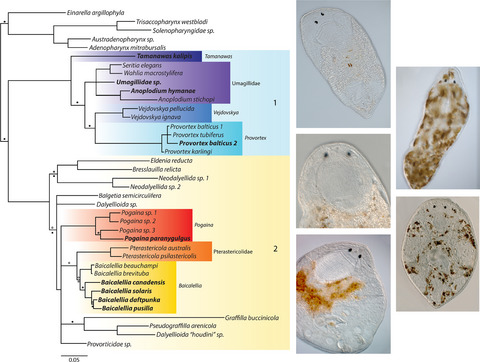
Six species of neodalyellid rhabdocoel flatworm were discovered and characterized with morphological and DNA sequence data. Three species, Baicalellia solaris, B. daftpunka and Tamanawas kalipis, are new to science. A phylogenetic analysis of neodalyellid rhabdocoels, inferred from 18S and 28S ribosomal RNA gene sequences of 39 taxa, provided further insight into systematics and trait evolution in this understudied group, including the recognition of a new genus, Tamanawas, and the suppression of Canetellia and Coronopharynx.
Phylogeography of Plectostylus Beck, 1837 (Gastropoda: Stylommatophora: Orthalicoidea): Origin and isolation of the Fray Jorge forest relicts in northern Chile
- Pages: 57-66
- First Published: 26 July 2018
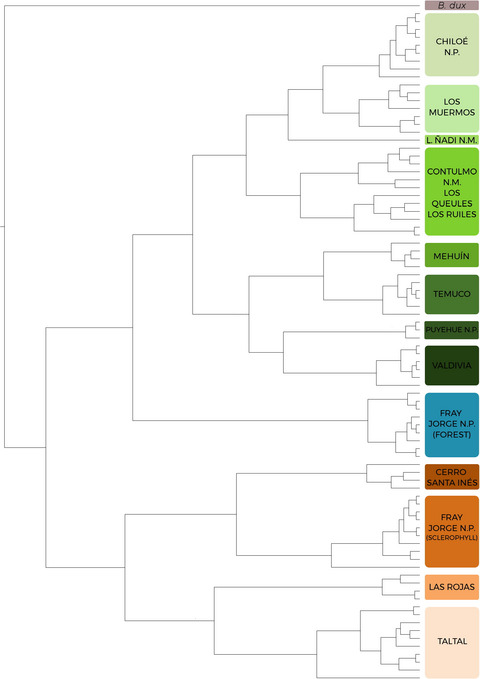
The Fray Jorge (FJ) forest relict is a wet temperate forest inserted in a xerophile matrix (the Atacama desert, the driest desert in the world) and separated from other similar temperate forests by thousands of km. We performed a phylogeographic analyses of the snail genus Plectostyus to disentangle the origin and timing of the FJ relict. Our tree shows that FJ is sister to all other forest clades. Our molecular clock analysis shows that FJ became isolated in the Paeogene/Neogene.
Phylogeography of the temperate marine bivalve Cerastoderma edule (Linnaeus, 1758) (Bivalvia: Cardiidae) in the Subarctic: Unique diversity and strong population structuring at different spatial scales
- Pages: 67-79
- First Published: 11 June 2018
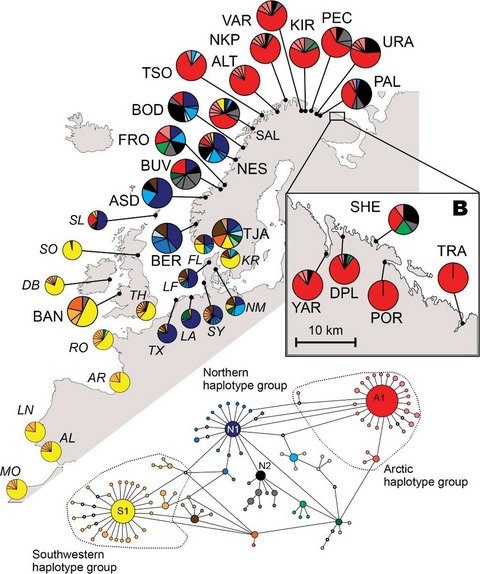
Using mitochondrial COI sequencing, we revealed strong population structuring in the common cockle Cerastoderma edule (Linnaeus, 1758) populations from the Norwegian and Barents Seas. Low genetic diversity of the subarctic cockle populations predominantly consists of a distinct clade of haplotypes, which is much less common in populations located south of the Arctic Circle and completely lacking in the North Sea. The Barents Sea C. edule seems to be the first conclusive example of true metapopulation revealed in marine broadcast spawners.
Geographic patterns of postzygotic isolation between two closely related widespread dung fly species (Sepsis cynipsea and Sepsis neocynipsea; Diptera: Sepsidae)
- Pages: 80-90
- First Published: 23 July 2018
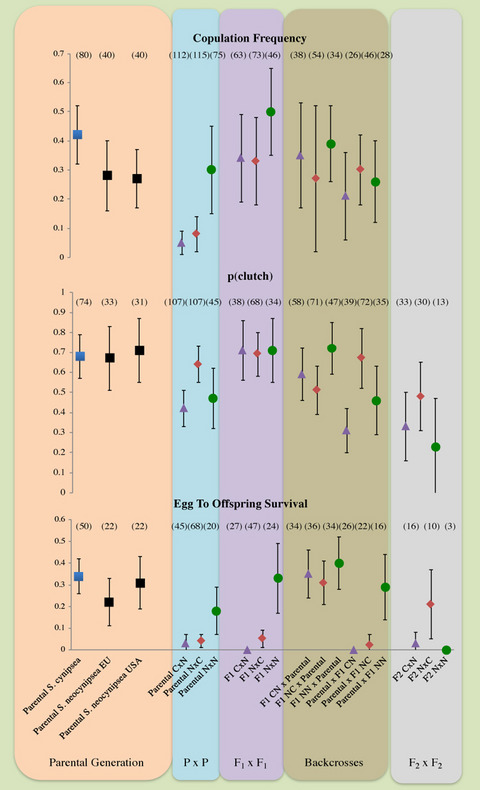
Postcopulatory isolating barriers are evident in hybrids of the widespread, occasionally sympatric dung fly sister-species Sepsis cynipsea and Sepsis neocynipsea: Egg-to-adult viability was strongly but not totally suppressed, offspring production approached nil in the F2 generation. Viable F1 hybrid males were sterile while females remained largely fertile (Haldane's rule). Crossing geographically isolated European and North American S. neocynipsea showed similar but weaker barriers that can be explained by random genetic drift. S(ubs)pecies status of continental S. neocynipsea appears warranted.
Systematics, genetics, and biogeography of intertidal mites (Acari, Oribatida) from the Andaman Sea and Strait of Malacca
- Pages: 91-112
- First Published: 04 September 2018
Spatial variability in species' potential distributions during the Last Glacial Maximum under different Global Circulation Models: Relevance in evolutionary biology
- Pages: 113-126
- First Published: 12 July 2018
Taxonomy of the long-tailed mouse Oligoryzomys destructor (Sigmodontinae: Oryzomyini) with the designation of neotypes for Hesperomys destructor Tschudi, 1844 and Hesperomys melanostoma Tschudi, 1844
- Pages: 127-144
- First Published: 14 June 2018
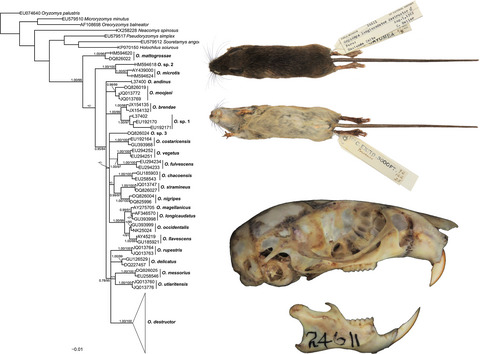
Here, we analyze patterns of morphological and molecular variation aimed to assess the taxonomic status of the long-tailed mouse Oligoryzomys destructor and its associated nominal forms. As part of the study, we selected neotypes for Hesperomys destructor and H. melanostoma. We concluded that O. destructor is a species formed by two subspecies, O. d. destructor and O. d. spodiurus.
Multilevel assessment of the Lacertid lizard cranial modularity
- Pages: 145-158
- First Published: 31 August 2018
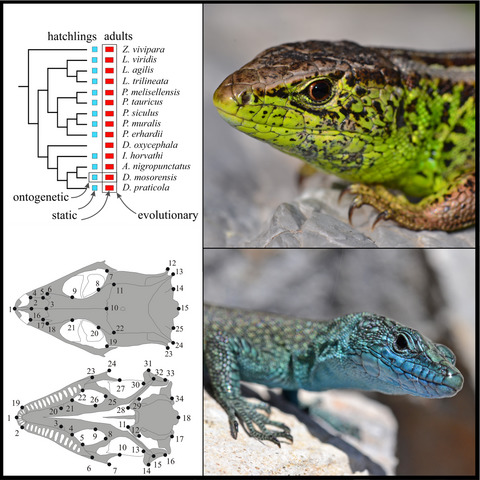
We used cranium shape data of 14 lacertid lizard speciesto test patterns of modularity using five alternative hypotheses at three levels – static, ontogenetic, and evolutionary. We found somewhat different pattern of covariation at the static compared to the ontogenetic and evolutionary levels. Our results indicate that in lacertid lizards, developmental integration is evolutionarily conservative and ontogenetically constrained. Functional covariation patterns observed at the static but not at the evolutionary level could have been adaptive and arisen through selection.
Systematics of the Saharo-Arabian clade of the Palearctic naked-toed geckos with the description of a new species of Tropiocolotes endemic to Oman
- Pages: 159-178
- First Published: 29 October 2018
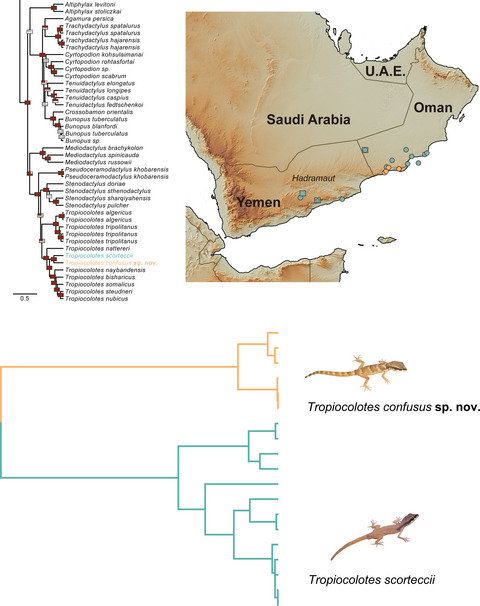
In this study, we use a comprehensive dataset of Gekkota to test the effect of gene and taxon sampling in recovering the monophyly of Tropiocolotes and the phylogenetic relationships between the four main groups of Palearctic naked-toed geckos. The results show that Tropiocolotes is monophyletic and highlights the importance of including more taxa and more data to resolve contradictory evolutionary relationships. Moreover, an integrative analysis of Tropiocolotes scorteccii uncovered a new species endemic to southern Oman that is described herein.
3D morphology of pharyngeal dentition of the genus Capoeta (Cyprinidae): Implications for taxonomy and phylogeny
- Pages: 179-190
- First Published: 25 March 2018
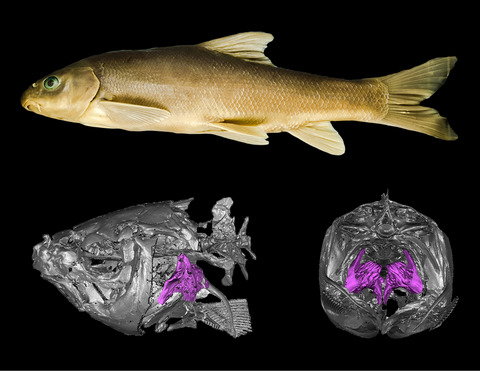
In this study, we propose a new methodology based on the detailed 3D morphology of the pharyngeal teeth. The results show that the detailed 3D morphology of the pharyngeal teeth is a useful tool for the identification of isolated teeth at the generic and/or specific level. Additionally, the preliminary analysis shows that the morphology of the pharyngeal teeth provides a potential phylogenetic signal. Both these patterns are very important for the taxonomy of cyprinid fishes and especially can be applied to fossil records.
Cranial variation in geographically widespread dwarf gerbil Gerbillus nanus (Gerbillinae, Rodentia) populations: Isolation by distance versus adaptation to local environments
- Pages: 191-203
- First Published: 31 August 2018
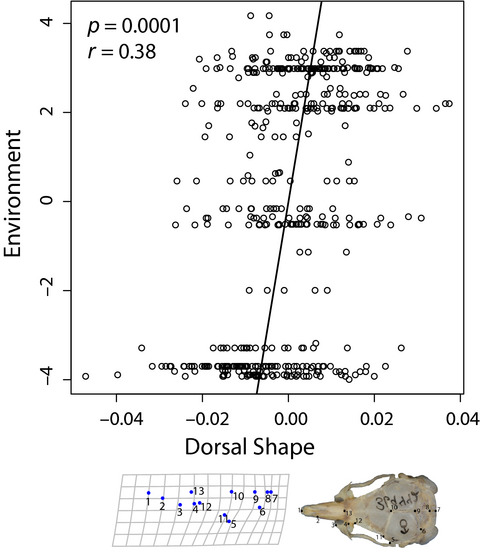
A geometric morphometric analysis of 473 specimens from throughout the broad distribution of the dwarf gerbil (Gerbillus nanus) detected no biologically meaningful variation in cranial shape. Cranial size did show geographic variation—however, this variation does not seem to show strong patterns consistent with isolation by distance, nor with adaptation to local environments, which could indicate that the geographic variation in the cranial size of G. nanus populations may be accounted for by factors unexamined in this study.




